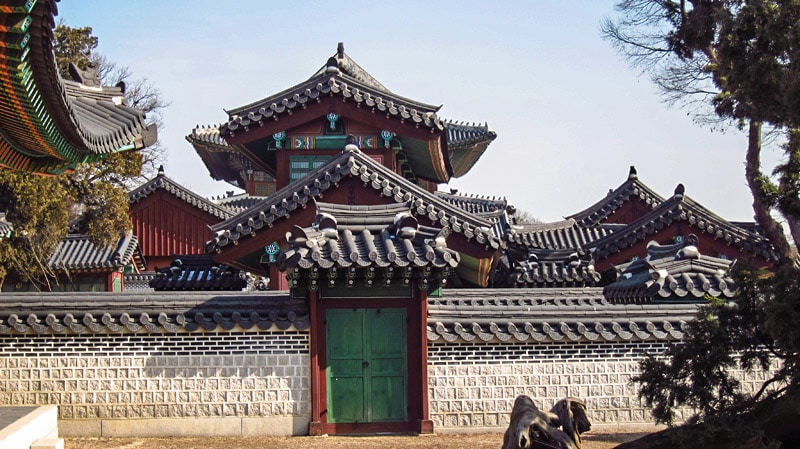
History
Changdeokgung Palace, known as “The Palace of Prospering Virtue,” is the second oldest palace in Seoul, only after Gyeongbokgung. It was first built between 1405 and 1412 under King Taejong and was used as a residence for the royal family for 270 years. The beautiful gardens surrounding the palace were also cultivated by Taejong and today serve as burial grounds for members of the royal family.
Unfortunately, in 1592 the palace was burnt to the ground by Japanese invaders. In 1610, reconstruction of Changdeokgung began, but it never came to completion as the palace was destroyed again during political revolution in in 1623. In 1647, the palace was finally fully reconstructed. The last emperor to live in the palace was Emperor Sunjong, who lived there until his death in 1926.
Today, Changdeokgung Palace is one of the most well-preserved palaces in South Korea, despite its history of repeated destruction and resurrection, symbolizing the resilient history of South Koreans.
Interesting Facts
Despite being repeatedly destroyed and rebuilt, Changdeokgung Palace has remained astonishingly true to its original architectural glory. It was specifically built to be in harmony with the surrounding natural beauty and mountains, complementing the landscape with its structural choices and color scheme. In 1997, it became a UNESCO World Heritage site in for its natural and architectural beauty rich cultural history. Located east of Gyeongbokgung, it is also known as the East Palace. Portions of the palace were used to film the hugely popular Korean Drama Dae Jang Geum in the 2000s.

Structures Within Palace Grounds
Daejojeon Hall – Where the queen resided; it was destroyed in fire in 1917 and reconstructed in 1920
Donhwamun Gate – The main palace gate, which was built 1412; this is the oldest of the palace gates that still stands today
Geumcheongyo Bridge – The oldest bridge in Seoul; it was built in 1411. (Pictured below)

Huijeongdang Hall – Originally a royal bedchamber, then office rooms; the original building was destroyed in 1917 and rebuilt 1920.
Injeongjeon Hall (National Treasure #225) – This is the throne hall. Originally built 1405, it was destroyed in the Imjin Wars and reconstructed in 1609; it burned down in 1803 and the current structure dates from 1804.
Juhamnu Pavilion – The royal archive and art gallery; it was built in 1776.
Seonjeongjeon Hall – An office room for officials in rule; originally built in 1461, it was destroyed in the Imjin Wars and restored again in 1647. (Pictured below)

Yeongyeongdang Residence – A house built stylistically after Confucian literati; it was constricted in 1828.
Biwon– a secret garden behind the palace, including a lotus pond, pavilions, and landscaped lawns, trees, and flowers with over 100 species of trees that are over 300 years old. (Pictured below)

SOURCES:
Changdeokgung Palace